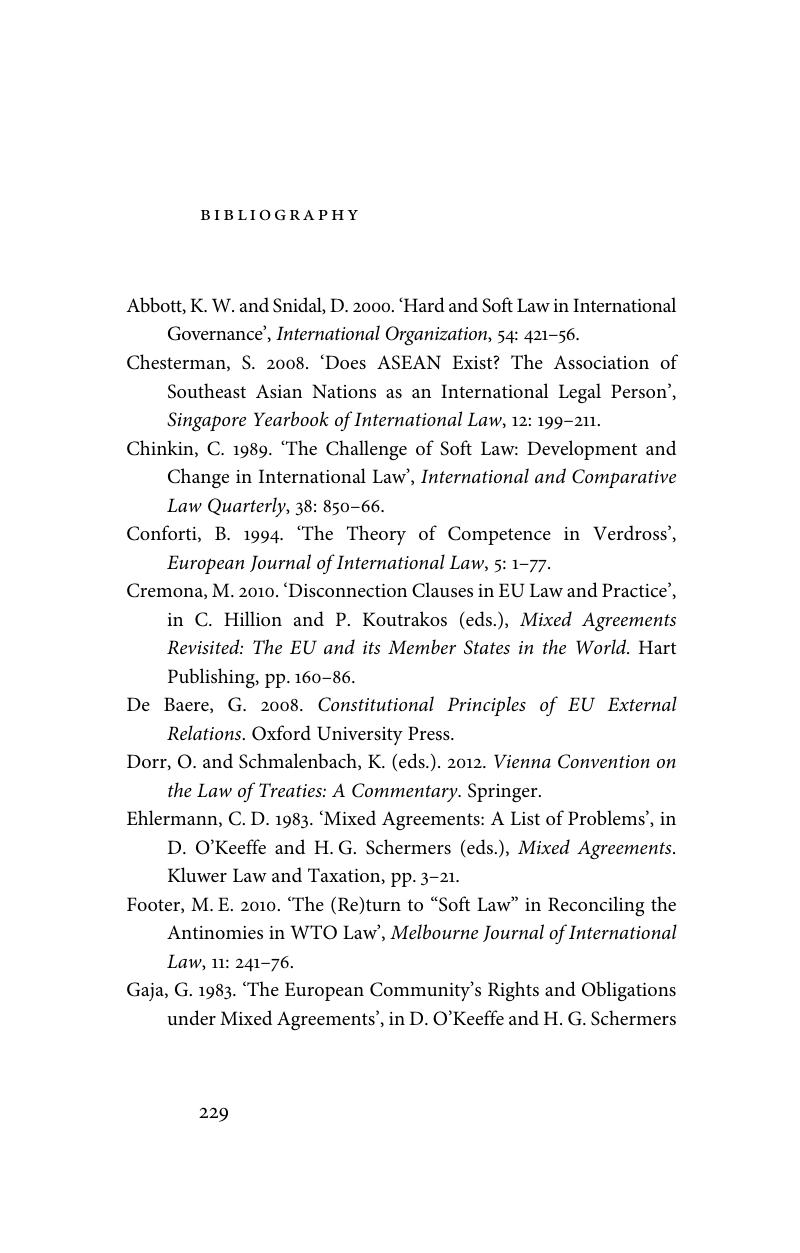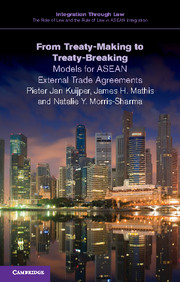Book contents
- Frontmatter
- Contents
- General editors' preface
- List of abbreviations
- 1 Introduction
- 2 Substantive components of an ASEAN trade agreement from an external perspective
- 3 Moving forward: different institutional models for ASEAN's external trade agreements
- 4 The rules on dispute settlement in agreements between ASEAN member states and third states: a critical inventory
- 5 From treaty-making to treaty-breaking
- Executive summary
- Appendix 1 Agreements signed by ASEAN member states with a non-ASEAN party
- Appendix 2 ‘Non-ASEAN’ agreements
- References
- Index
- References
References
Published online by Cambridge University Press: 05 April 2015
- Frontmatter
- Contents
- General editors' preface
- List of abbreviations
- 1 Introduction
- 2 Substantive components of an ASEAN trade agreement from an external perspective
- 3 Moving forward: different institutional models for ASEAN's external trade agreements
- 4 The rules on dispute settlement in agreements between ASEAN member states and third states: a critical inventory
- 5 From treaty-making to treaty-breaking
- Executive summary
- Appendix 1 Agreements signed by ASEAN member states with a non-ASEAN party
- Appendix 2 ‘Non-ASEAN’ agreements
- References
- Index
- References
Summary

- Type
- Chapter
- Information
- From Treaty-Making to Treaty-BreakingModels for ASEAN External Trade Agreements, pp. 229 - 233Publisher: Cambridge University PressPrint publication year: 2015

